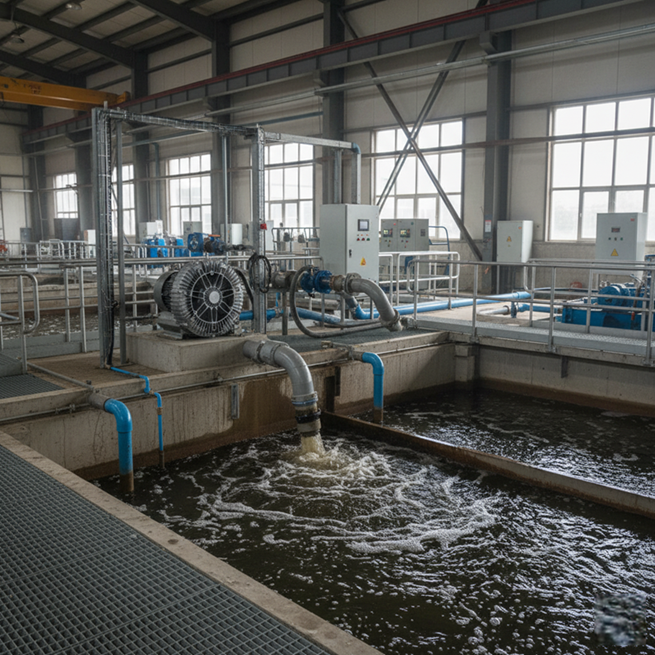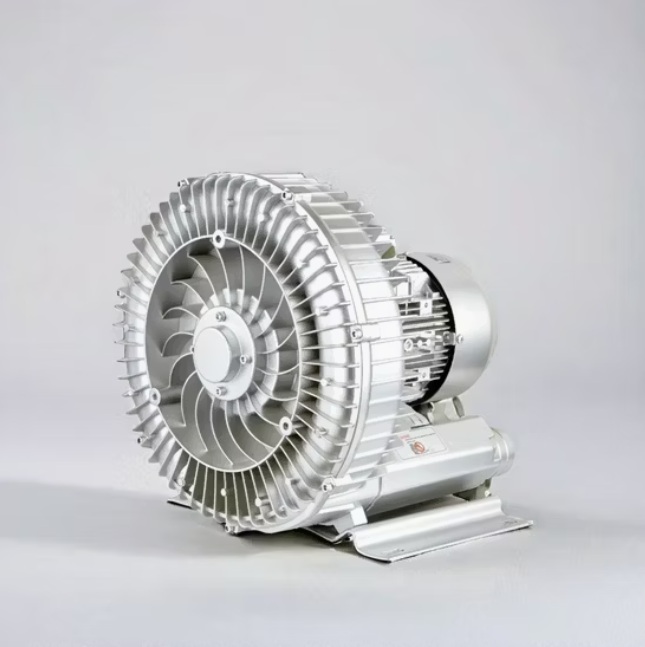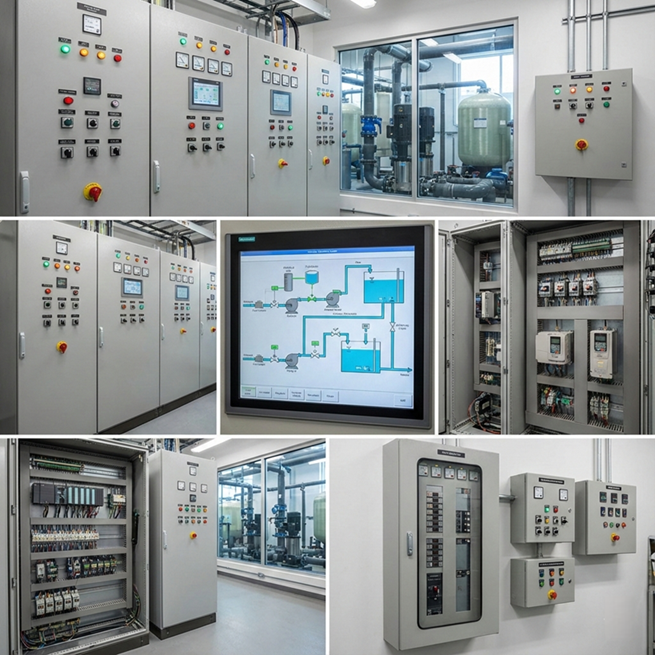
Understanding the Different Methods of Water Aeration
For thousands of years, aerators have been used to maintain the quality of water sources, with the history of successive aerators dating back to Roman times. Even before the Romans knew what oxygen was or how aerated water worked, they recognized the importance of this process.
The goal of aeration is to increase oxygen levels in a body of water. Examples of how water is aerated include disturbing its surface or creating bubbles beneath it. By mixing water with air, gas exchange is enhanced, allowing oxygen to displace unwanted gases such as carbon dioxide and methane.
Without aeration, bodies of water such as lakes, ponds, or even wastewater can deteriorate, and water quality can decline. From preventing stagnation to eliminating unpleasant odors, aeration helps keep water fresh and healthy.
Types of Water Aeration Methods
There are many examples of water aeration methods, and it’s important to understand how they work. From elegant fountains to modern solar-powered aerators, there are numerous options available, each suited to different needs. However, most systems can be defined as either mechanical or diffuse.
Mechanical Water Aeration
Mechanical aeration is the aeration of a body of water by moving the water’s surface to mix it with air. Aeration methods vary, but they often involve rotating shafts, turbines, or fans to move the water’s surface and create bubbles.
Common methods of mechanical aeration include:
- Roading Wheels: Paddles push air underwater, moving the surface. This movement creates turbulence and mixes the air in the water, promoting gas exchange.
- Floating Surface Aerators: Similar to fountains, but usually less aesthetically pleasing, floating surface aerators release water directly onto the water’s surface instead of pumping it into the air. This creates surface vibration and increases water-air contact for oxygen transfer.
- Low-Speed Surface Aerators: These aerators operate similarly to rotating wheel aerators, moving the water with shafts. The slow rotation of the shafts creates gentle mixing, introducing air into the water and preventing stagnation.
- Fountains: Fountain aerators release water into the air. As the water droplets fall back down, they pick up oxygen from the atmosphere, increasing the oxygen levels in the water.
- Waterfalls: Cascade aeration is the oldest known method of aeration and involves water flowing down a series of steps. This increases the water’s surface area exposed to air, facilitating oxygen absorption.
Diffusion Aeration
Diffusion aeration, also known as bottom-up aeration, involves introducing air into the water by creating bubbles near the bottom. This is done using diffusers, pipes, and ground blowers. The most commonly used methods are microbubble aeration and coarse bubble aeration.
Microbubble aeration involves injecting tiny bubbles underwater, making it one of the most efficient ways to oxygenate the water. It is also energy-efficient, meaning lower costs for treatment plants that use aeration methods. Pipe diffusers, disc diffusers, and needle-punched plates are the most common types of diffusers used in microbubble aeration.
In practice, coarse bubble aeration is identical to fine bubble aeration, except that larger bubbles are injected. Although less efficient than fine bubble aeration, it can displace more liquid. This makes it an attractive option for wastewater treatment, as it is more effective at preventing the settling of biosolids.
Which is better: mechanical aeration or diffusion aeration?
Each aeration method has its advantages and disadvantages, depending on specific needs and preferences.
Generally, mechanical aeration is preferred for shallow water bodies. Because mechanical aeration typically affects the water’s surface directly, deeper waters are less affected. If aesthetics are the primary concern, mechanical aeration methods may be the better choice. While surface mechanical aeration can create a visually appealing water feature, it can be visually jarring when using a practical aerator.
Diffusion aerators are ideal for deep water bodies because they are typically aerated from the bottom up. Diffusion aeration methods have their own aesthetic appeal, as bubbles rise to the surface.
Other Aeration Methods
If traditional mechanical and diffused aeration methods are not preferred, other options are available.
Natural aeration uses natural processes to maintain water health. This is often done by introducing aquatic plants into the water body. Without requiring a power source, these plants will absorb carbon dioxide and other exhaust gases and release oxygen through photosynthesis. They can also add a natural and attractive element to the water body.
The types of plants required depend on the surface area and depth of the water body, with greater care taken with smaller bodies of water. Otherwise, there is a risk of plant proliferation and difficulty in managing them.
Solar-powered aerators and windmills come in various forms, although they are generally diffused aerators. The main difference lies in how they are powered. Solar-powered aerators draw their energy from the sun and store it in a battery, which is then used as a power source. Windmill aerators use wind power to operate directly.
While these options are environmentally friendly and reduce operating costs, they do have drawbacks. Solar-powered fans may not store enough energy to operate around the clock, even during the summer months. Wind turbine fans face a similar problem, operating only in windy weather.
Wastewater Aeration Systems
Aeration is a crucial process in wastewater treatment because it provides the oxygen that microorganisms need to break down organic pollutants. This biological treatment significantly reduces the levels of harmful substances in the water, making it safer for discharge or reuse.
Thanks to their simplicity, most mechanical aeration systems operate efficiently in harsh environments such as wastewater treatment plants. Constructed from corrosion-resistant metals, paddles, blades, and shafts provide effective aeration.
Although more complex, diffused aeration systems are more effective in deep tanks. They also require less maintenance and are more efficient at aerating the water. Diffused aerators are also more energy-efficient than mechanical aerators.
Mechanical aeration and diffused aeration are comparable, but both are highly beneficial at different stages of wastewater treatment.
Read more about the role of aeration systems in wastewater treatment plants
Factors to consider when choosing an aeration method
When selecting the appropriate aeration device, it is important to understand that different water aeration methods work best in different environments, and each has its own advantages and disadvantages.
When choosing an aerator, it’s important to consider the following:
- Depth: How deep is the body of water? Depth affects the type of aerator needed. Deeper bodies of water may require a diffuse aeration system to effectively distribute oxygen throughout the water column.
- Surface Area: How large is the surface area of the body of water? A larger surface area may require multiple aerators or a more powerful aeration system to ensure adequate oxygenation.
- Power Availability: How much power can the aerator supply, and how easily can it be connected to a power source? This will determine the feasibility of using certain types of electric aerators and affect operating costs.
- Budget: How much can you afford to spend on an aerator? Aerator systems vary considerably in price, installation costs, and long-term maintenance expenses.
- Water Quality Goals: What water quality standards must be met? Required criteria, such as dissolved oxygen levels and pollution reduction, will determine the aeration capacity and specific features needed for the aerator system.
- Aquatic Life: Are there any terrestrial organisms living in the body of water? The presence of aquatic life influences the choice of aeration system, as some aeration methods may be more suitable for sensitive ecosystems or specific types of marine organisms.
Flow Load Monitoring
To maintain regulatory compliance, it is essential to monitor the flow load entering the treatment facility. Each aeration system has a limited treatment capacity, and excessive flow can cause the outflow to exceed permissible discharge standards. This necessitates a proactive approach to managing the volume of wastewater entering the system.
Aeration Control Systems
Automated aeration control systems are implemented to optimize the aeration process and ensure compliance with regulatory standards. These systems adjust the aeration rate based on the immediate oxygen demand, maintaining the required dissolved oxygen concentration in the treatment process.
Effective communication between designers, control specialists, and operators is crucial to ensuring that regulatory considerations are incorporated into the design of these systems.
Aeration System Applications
Aeration systems have multiple applications, ranging from preventing turbidity in garden ponds to ensuring that wastewater treatment sites meet required quality standards. Distributed aeration systems offer more complete mixing, higher efficiency, less maintenance, and greater durability and lifespan, among other advantages.
At CareWater Establishment, we provide all the highest quality components and requirements for water treatment plants, specifically designed for wastewater treatment facilities. With our extensive experience in this field, we help our clients ensure the smooth and continuous operation of their wastewater treatment plants. To determine which aeration system is best suited to your wastewater treatment site, please contact us.


























